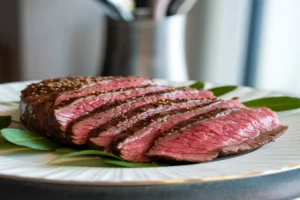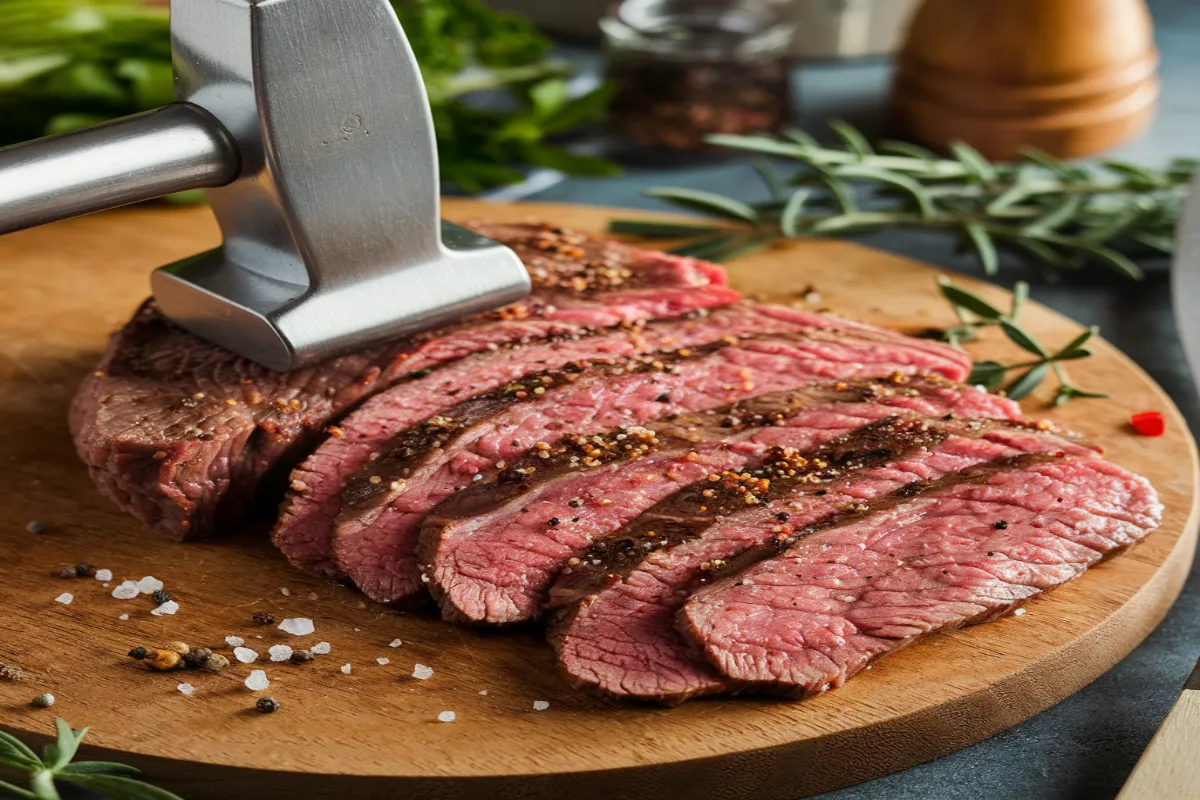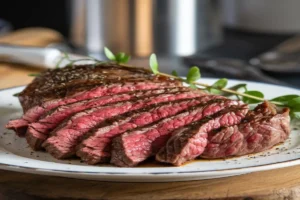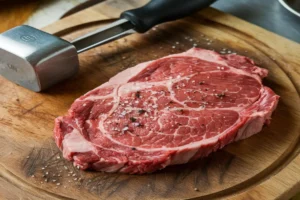Shaved beef steak is a versatile and popular choice for many dishes, but it can often be tough and chewy if not properly prepared. Tenderizing this thinly sliced cut is crucial to ensure that it cooks up juicy and flavorful. In this comprehensive guide, we’ll explore various methods to tenderize shaved beef steak, from mechanical techniques to marinating and beyond. Whether you’re making a classic Philly cheesesteak or adding beef to your stir-fry, these tips will help you achieve the best results.
Understanding Shaved Beef Steak
Shaved beef steak is a thinly sliced cut of beef, often taken from tougher parts of the cow like the chuck or round. Due to its thinness, it cooks quickly, making it ideal for fast meals. However, this quick cooking also means there’s little time for the meat to naturally tenderize during the cooking process. Without proper tenderizing, the steak can end up being chewy and unappetizing.
What is Shaved Beef Steak Used For?
Shaved beef is commonly used in dishes where thin slices of meat are preferred. Some popular uses include:
- Philly cheesesteaks
- Stir-fries
- Beef sandwiches
- Tacos and wraps
- Salads
Given its versatility, knowing how to tenderize shaved beef steak is key to making these dishes both delicious and enjoyable.
Why Tenderizing is Necessary
The natural texture of shaved beef steak, especially when it comes from tougher cuts, can be chewy and difficult to eat. Tenderizing helps to break down the muscle fibers, making the meat softer and more flavorful. Without this step, even the best-cooked steak can end up being less than satisfying.
The Importance of Tenderizing Shaved Beef
Tenderizing doesn’t just improve the texture of the meat; it also enhances its flavor. When you tenderize shaved beef, you’re allowing marinades, seasonings, and even cooking methods to penetrate deeper into the meat, resulting in a more flavorful dish. Moreover, tenderized meat cooks more evenly, ensuring that every bite is as delicious as the last.
Common Methods to Tenderize Shaved Beef Steak

There are several tried-and-true methods to tenderize shaved beef steak, each with its unique advantages. Let’s dive into these techniques to understand how they work and how you can apply them in your kitchen.
1. Mechanical Tenderizing
Mechanical tenderizing involves physically breaking down the muscle fibers of the meat, making it easier to chew and digest. This method is particularly useful for tougher cuts of meat like shaved beef steak.
- Using a Meat Mallet: A meat mallet is a common tool for mechanical tenderizing. By gently pounding the steak, you break up the tough muscle fibers, making the meat more tender. It’s important to do this evenly to avoid tearing the meat. For more details, you can refer to How to Use a Meat Tenderizer.
- Tenderizing Tools: Tools with small blades or needles are also available and work by creating tiny cuts in the meat. These cuts help to break down the fibers and allow marinades to penetrate more effectively. This method is particularly beneficial for very thin cuts like shaved beef steak.
2. Marinades
Marinades are a highly effective way to tenderize meat, including shaved beef steak. The key lies in the ingredients used, particularly acids and enzymes, which help to break down the meat’s proteins.
- Acidic Marinades: Ingredients such as lemon juice, vinegar, and yogurt are acidic and work by breaking down the protein structures in the meat, making it more tender. The acid also adds a subtle flavor that complements the beef.
- Enzyme-Based Marinades: Certain fruits like pineapple, papaya, and kiwi contain natural enzymes that are highly effective in tenderizing meat. These enzymes break down the proteins in the beef, resulting in a tender texture without the need for prolonged marination. For a scientific explanation, check out The Science of Marinades.
When using marinades, it’s crucial to balance the time the meat spends soaking. Over-marinating can lead to an overly mushy texture, while under-marinating may not tenderize the meat sufficiently. Generally, 30 minutes to 4 hours is an optimal range for shaved beef steak.
3. Salt and Brine
Salt is a natural tenderizer and works by breaking down the proteins in the meat, making it softer and more flavorful. There are two main ways to use salt for tenderizing: dry brining and wet brining.
- Dry Brining: This method involves rubbing the steak with salt and letting it sit for a period, usually a few hours. The salt draws out moisture from the meat, which is then reabsorbed along with the salt, helping to break down the muscle fibers and improve the meat’s texture.
- Wet Brining: In wet brining, the meat is soaked in a solution of water, salt, and sometimes sugar. This method is effective because the saltwater penetrates the meat, helping it to retain moisture during cooking and making it more tender. For more detailed instructions, you can refer to this Complete Brining Guide.
Both methods are excellent for tenderizing shaved beef steak, and the choice between them can depend on your preference for the final flavor and texture.
4. Cooking Techniques
The way you cook your shaved beef steak can significantly impact its tenderness. Some cooking methods are better suited for tenderizing tough cuts of meat.
- Slow Cooking: Slow cooking methods like braising are ideal for tougher cuts of meat. By cooking the steak at a low temperature over a long period, the collagen in the meat breaks down, resulting in a tender, juicy dish. This method is particularly effective for dishes like beef stew or braised beef sandwiches.
- Quick Searing: For a quicker meal, searing the steak in a hot pan can also help retain its tenderness. The key is to cook the steak quickly at high heat, which seals in the juices and prevents the meat from becoming dry and tough. This method works well when the steak has been previously marinated or brined.
5. Use of Tenderizing Agents
If you’re short on time or looking for an extra tender touch, tenderizing agents can be a helpful addition to your kitchen arsenal.
- Commercial Tenderizers: These products often contain enzymes or salts that help to break down the meat’s proteins quickly. While effective, it’s important to use them sparingly, as overuse can lead to an unpleasant, mushy texture.
- Natural Tenderizers: If you prefer a more natural approach, ingredients like ginger, buttermilk, or even yogurt can be added to your marinades to help tenderize the meat. These



